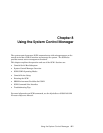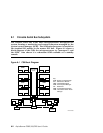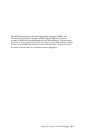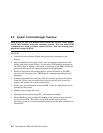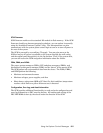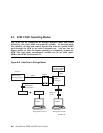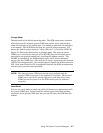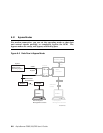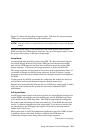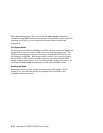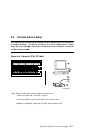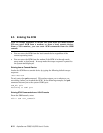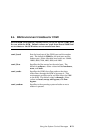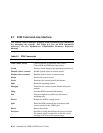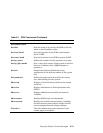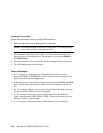
Using the System Control Manager 8-9
Figure 8–3 shows the data flow in bypass mode. Note that the internal system
COM1 port is connected directly to the modem port.
NOTE: You can connect a console device to the modem port in any of the bypass
modes.
The local console device is still connected to the SCM and can still enter the
SCM to switch the COM1 mode if necessary. In any of the bypass modes, when
the system loses power, it defaults to snoop mode.
Snoop Mode
In snoop mode data partially bypasses the SCM. The data and control signals
are routed directly between the system COM1 port and the external modem
port, but the SCM taps into the data lines and listens passively for the SCM
escape sequence. If it detects the escape sequence, it enters the SCM CLI.
The escape sequence is also passed to the system on the bypassed data lines. If
you decide to change the default escape sequence, be sure to choose a unique
sequence so that the system software does not interpret characters intended for
the SCM.
In snoop mode the SCM is responsible for configuring the modem for dial-in as
well as dial-out alerts and for monitoring the modem connectivity.
Because data passes directly between the two UART ports, snoop mode is useful
when you want to monitor the system but also ensure optimum COM1
performance.
Soft Bypass Mode
In soft bypass mode all data and control signals are routed directly between the
system COM1 port and the external modem port, and the SCM does not listen
to the traffic on the COM1 data lines. The SCM is responsible for configuring
the modem and monitoring the modem connectivity. If the SCM detects loss of
carrier, it switches automatically into snoop mode. If you have set up the dial-
out alert feature, the SCM pages the operator if an alert is detected and the
modem line is not in use.
Soft bypass mode is useful if management applications need the COM1 channel
to perform a binary download, because it ensures that SCM does not
accidentally interpret some binary data as the escape sequence.
Continuedonnextpage



